

Imagine biting into your next meal knowing every ingredient is actively saving the planet. That’s the audacious promise of the Netherlands’ latest sustainable food tech and agritech developments. It’s a food revolution that’s not just about eating, but about the future itself.
This movement is gaining momentum and attention as climate concerns become more urgent. Industrial agriculture is a major environmental culprit, yet innovations arising from Dutch labs could hold the keys to reversing damage. With today's crisis, why aren't we all focused on these ground-breaking solutions?
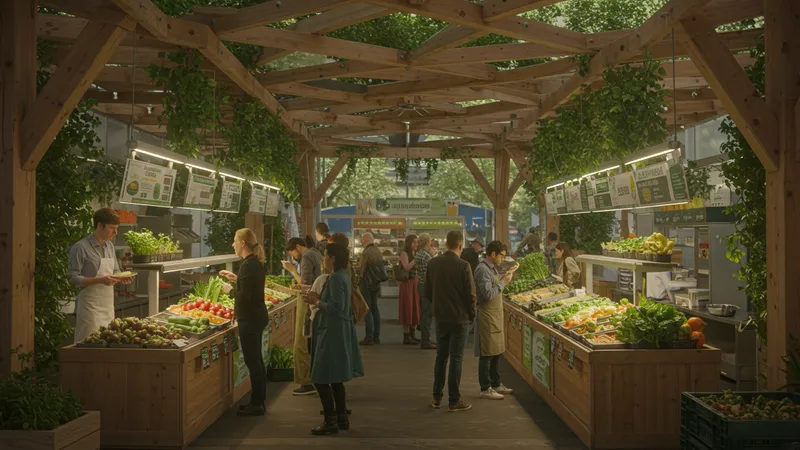
The Netherlands is blending technology and tradition in ways that are turning heads globally. Did you know Dutch innovators have compressed entire farms into buildings, disrupting traditional agriculture paradigms? Or that they’re repurposing regular food waste into gourmet delicacies—a move anyone passionate about zero waste dreams of. However, this is just scratching the surface...
The ingenious use of aquaponics and hydroponics is reshaping food production as we know it. Imagine a system where the fish supply nutrients for plants, and the plants, in turn, purify water for fish. This cycle incredible for its efficiency is a brainchild of Dutch agro-engineers. But that’s not even the wildest part…
If an entire country can be a model for sustainable agriculture, it's the Netherlands. Imagine thriving fields underground, inside skyscrapers, mitigating urban sprawl while feeding the population. What happens next shocked even the experts…
Roaming the skyline of Rotterdam, you'd now see vertical farms nestled beside high-rises. These towers use 95% less water and chemicals than traditional farming and proliferate in spaces where land is scarce. The innovation lies not just in repurposing space but also in yielding results that outshine traditional methods. But there’s one more twist...
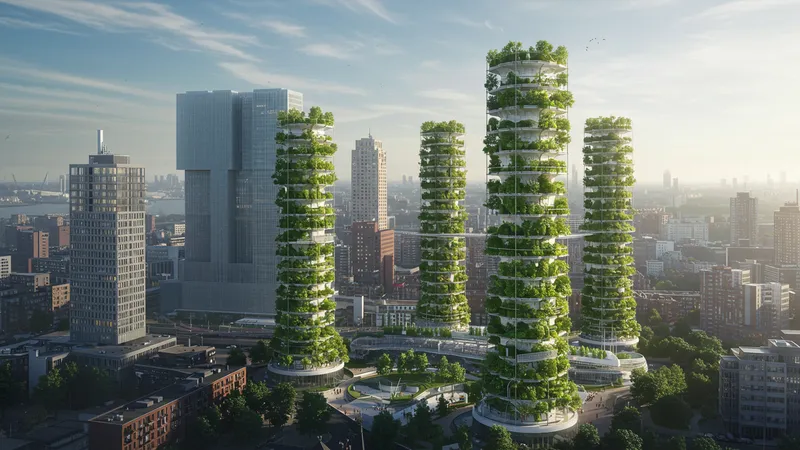
The recent rise of agritech in these urban setups makes harvesting 50% faster than traditional methods without sacrificing nutrient content. Elevated above and beyond what anyone thought possible, these sky farms are defining modern agriculture's next steps. What you read next might change how you see this forever.
City planners are already buzzing about the potential of integrating these farms into urban refurbishments and expansions. By 2040, it's projected that most large Dutch cities could have a self-sustaining crop supply rumor hint. Though revolutionary, the pivotal question remains: are we prepared for such a rapid transformation?
Imagine a city where fresh produce is no longer shipped but simply taken downstairs. Vertical farm enthusiasts are betting on this vision, positing remote-controlled management that may turn hobby gardeners into urban farmers. But as the Dutch say, every tulip bulb has its time, and we might be just ready to bloom.
Once a humble ocean-floor plant, seaweed is emerging as a top contender for sustainable consumption. Dutch initiatives in aquaculture are farming seaweed on an unprecedented scale, its protein output challenging conventional crops like soy. Packed with nutrients, it's not only a food source but a solution for carbon absorption. But that's not all...
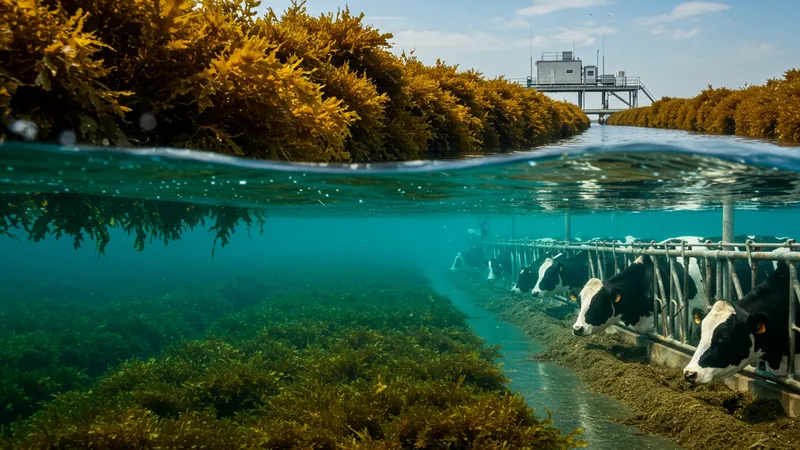
Leading researchers predict that integrating seaweed into livestock feed could cut methane emissions by upwards of 30%. This eco-friendly feed alternative doesn’t compromise taste for cows or nutrition for humans, representing yet another Dutch brainwave in cutting greenhouse gasses. And this is just the beginning.
Beyond the cows, how about feeding the world? Seaweed farms are not only sprouting off Dutch coastlines but are also inspiring non-coastal European regions. Affordable, efficient, and minimal in landspace, the seaweed farms promise to redefine farming altogether. For a twist of the sea-flavored, are you ready for this fresh wave?
The potential of seaweed broadens beyond food. From biodegradable plastics to biofuels, it symbolizes a giant leap into sustainable futures. But amidst this growth, challenges linger: acceptance, scaling, and safety. What's knitted within these sea currents could shift paradigms, leaving us to wonder what's next out of the water.
Forget traditional soil-based farming. Hydroponics, an avant-garde farming technique, is turning heads in the Netherlands' greenhouses. With growth speeds up to 30% faster than earthly methods, plants thrive in nutrient-rich water solutions, using far less space and resources. This space-age farming solution might be as clean as it gets...
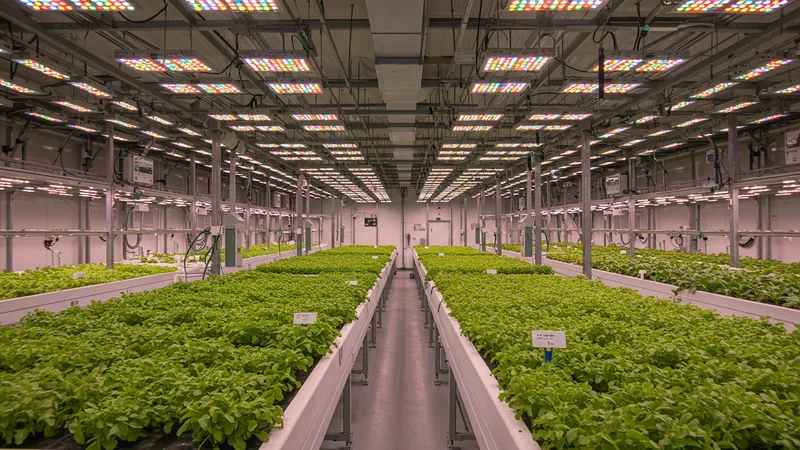
The Netherlands is becoming a laboratory of sorts for hydroponic ventures, merging scientific precision with agricultural practice. Advanced LED technologies mimic sunlight, while technology stacks monitor plant growth in real-time, ensuring peak productivity. What you read next might just redefine modern gardening.
Dutch startups aren't merely steering; they are soaring. Business leaders foresee an optimized future where hydroponics could seamlessly integrate into urban landscapes, weaving farms into our very buildings. Imagine kitchens where a fresh salad is not from the market but from the wall next to the fridge. Fascinating, isn’t it?
The success stories keep coming, pushing boundaries and inspiring neighboring countries to follow suit. However, challenges remain: regulatory support and adoption ease need addressing. Some wonder if hydroponics is a gimmick or the blueprint for urban renewal. As the Dutch experiment boldly, the rest of the world watches closely.
Imagine greenhouse farming where the power bill never arrives. That's a reality in several Dutch innovative agricultural businesses—greenhouses powered entirely by solar energy. These energy-neutral facilities are the masterminds of German design and Dutch ingenuity converging for sustainability, championing a future where the sun does all the work.
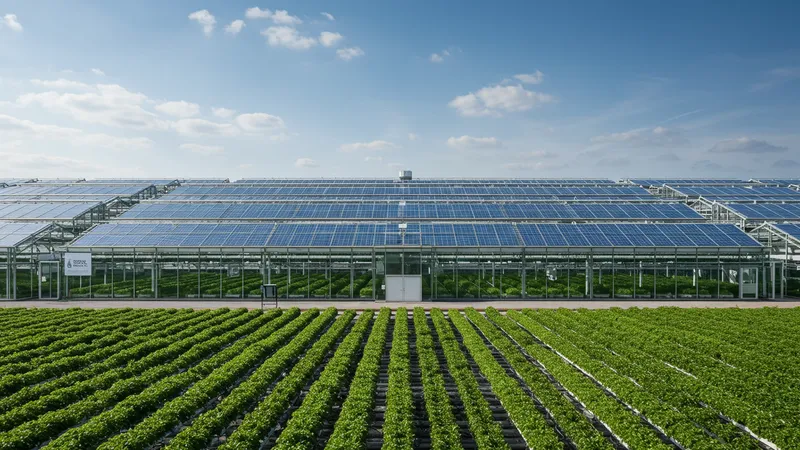
Maximizing every sunlight hour using AI-driven technologies, these greenhouses are unrivaled in efficiency. With a reduced carbon footprint, they mitigate a perennial dilemma in modern agriculture. As they pave the way for greener solutions, a question arises: can solar alone sustain such growth long-term?
The economic impacts are equally enticing. Reducing energy costs means more budget for innovation. Stunningly, combining AI with solar aligns perfectly with the Netherlands' vision for a low-carbon future. But what of those potentially powerful night hours?
While debates on viability simmer, researchers are probing alternative energy synergies like wind and biomass. What unfolds next in this sunny pursuit could set collective eyes skyward, contemplating brighter and smarter era-defining approaches. Is this the light at the end of agriculture's tunnel?
Mountains of hype surround the forgotten grain, spelt, now making a vigorous comeback in Dutch agronomy circles. Recognized for its adaptability and robustness in varied climates, spelt is appealing to modern farmers. Revered for millennia, is this golden grain ready for a new southern resurgence? But the story continues...
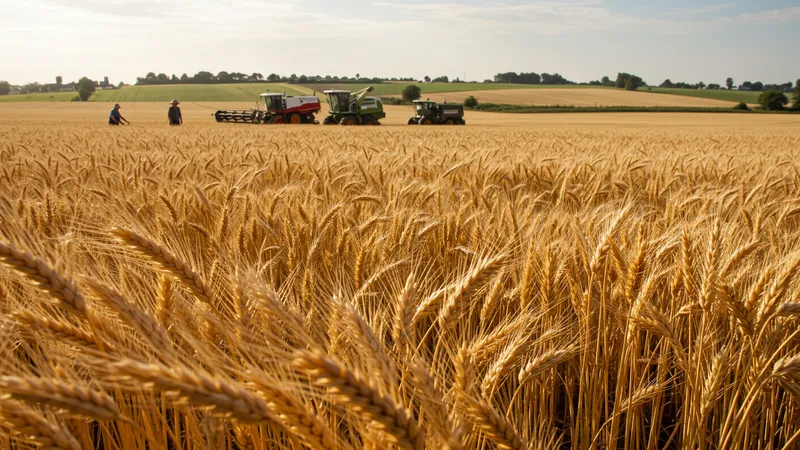
Foodies and nutritionists alike are abuzz with spelt's resurgence, enriched by unprecedented production techniques bolstering yield while minimizing environmental havoc. Heirloom seeds germinate traditions while engineered crops promise culinary versatility. What unfolds might mark spelt as the grain of our future tables.
The nutritional angle of ancient grains cannot be understated, sparking versatility and endurance for food security. Chefs, bakers, and brewers are reimagining menus with spelt, blending history and innovation into a timeless mix. As they hone recipes, are we witnessing new culinary classics?
Efforts to boost spelt's popularity face natural hurdles—climate shifts and land reforms. But farmers are bending these challenges into opportunities. As the world gazes at its return to simplicity, might spelt be the resilient staple amidst a sea of processed alchemy? Indeed, a grain to grind seriously.
Precision farming, once a concept of science fiction, is reality thanks to Dutch innovation in drones and big data analytics. With micro-level accuracy, farmers monitor crops from above, optimizing resource use and yield quality. Technically savvy, these methods offer a glimpse into agriculture's high-tech reincarnation...
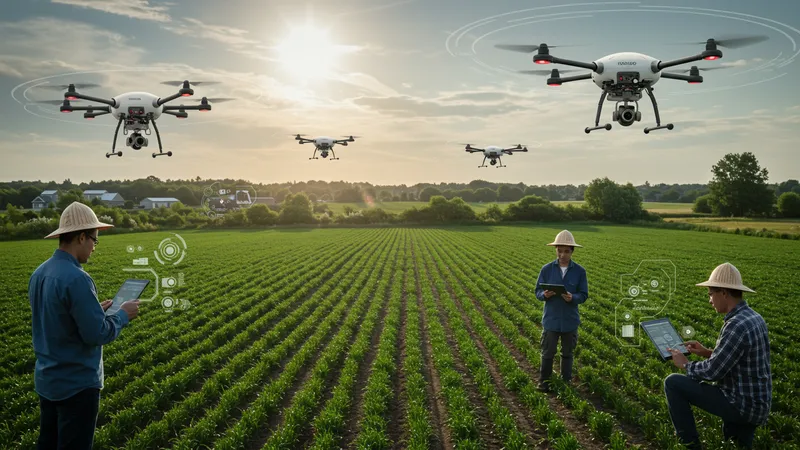
The use of drones in farming is propelling efficiency skyward, combining state-of-the-art cameras and sensors to extract invaluable data. Layer that with AI analytics, and farmers possess near-omniscient control over crop variables. For those skeptics, what might this tech-driven agility soon mean?
For stakeholders betting on precision farming, the union of technology and agri-practice is seeing returns. Fertilizer savings and pest management are being perfected like never before. Yet, beyond the tech wizardry, what if this became mainstream farming's heartbeat? Are we prepared?
The road to success isn't without its obstacles: regulatory hurdles must be navigated, and trust built between traditionalists and techno-agristocrats. As investment surges into this bold movement, the looming question is whether precision farming can universally shift farmers from plowhands to pioneering pilots.
In an enviable attempt to go full circle, the Netherlands is closing the loop on agriculture with the circular economy. Systematically reducing waste—be it energy, resources, or runoff—is redefining sustenance. Architects of this approach are seeding fields with profitability, sustainability, and eco-friendliness. But what's really exciting unfolds...
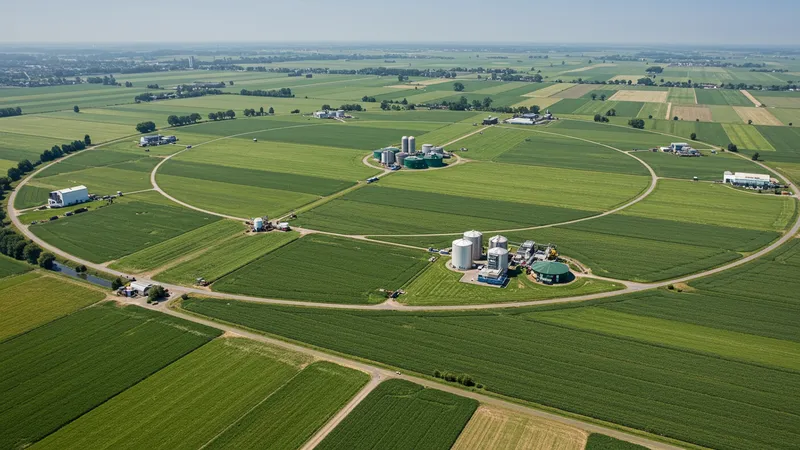
The crux of this cycle-centric approach is the maximization of resource value, with each stage leveraged for subsequent gains. Innovations in bio-digesters transform agricultural by-products into energy, enriching fields for another growth spurt. If executed globally, imagine the systemic shifts such seamless transitions might usher.
Incorporating circular principles into agriculture is attractive on paper, but real-world translations face complexities. Infrastructure development, community integration, and resource allocations must align to turn vision into reality. What emerges next might redefine eco-systems from literal roots up.
Proponents argue that a consistent circular system might anchor societal resilience amidst climate crises. Activists whisper it's high time we close our loops. However, conceptual shifts require tangible context. As the Netherlands plots out this circular economy, are we ready to turn full circle?
In a labor of love and laboratory precision, Dutch scientists are synthesizing meat without raising or slaughtering animals. Molecular gastronomy is stepping into the appeal of lab-grown meats, conjuring experiences from cultivated cells. Beneath sizzling grill marks lie lab magic, but what might this taste revolution challenge next?
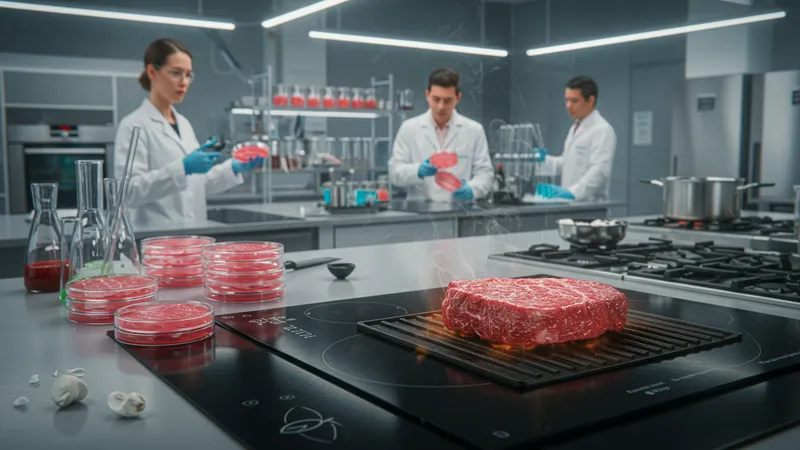
The promise of meat without livestock is tantalizing, particularly for ethical eaters conscious of industry impacts. Laboratories churn cultivated meats, simulating authentic taste profiles and textures. Could lab-grown protein replace the ethical farm? The revolution unfolds with chicken bites and steak sizzles.
The potential of cultured meat is vast: reducing emissions, conserving land, and offering food security. Fully realizing benefits raises concerns about costs, acceptance, and regulatory hurdles. As markets gingerly introduce lab-grown options, could this butcher the norm?
Acceptance is spreading, yet skeptics remain, uncomfortable with lab-crafted plates. Culinary traditions provide a barrier, though experimental chefs push boundaries ever further. With brands catching mainstream eyes, acceptance degrees divide passions. Could molecularly-crafted cuisine define a new dining consciousness?
From seeding to harvest, AI is creating ripples in food production. In the Netherlands, automation's rapid uptake is pioneering agricultural efficiency and foreseeing potential hurdles before they affect yield. But what of the human touch? Whilst AI schemes, where do creativity and customization lie?
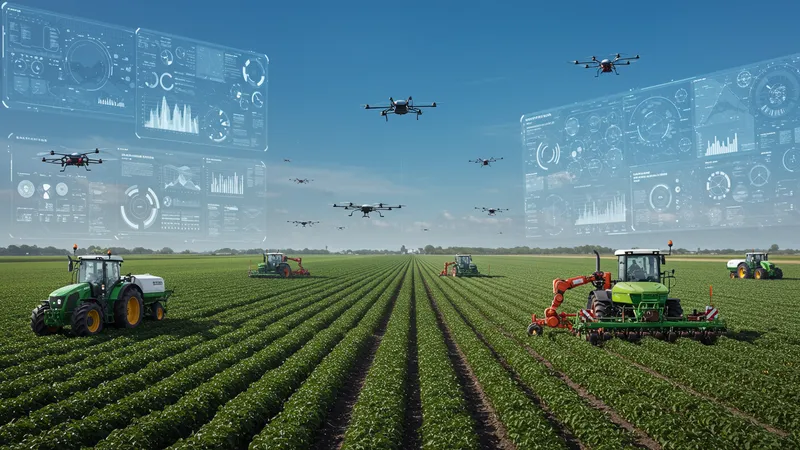
The endless algorithms serve as a farming compass—it's no surprise experts laud AI for precision. Leveraging deep learning, the software drives real-time insights, energizing agriculture's feed-forward feedback loop. This impactful tech seems almost predestined to spur productivity. Could agricultural AI really avoid downfall?
Farmers embracing automation find themselves relieved from laborious tasks, focusing instead on higher-level analytics. The juxtaposition of traditional farming and AI-aided titans might provoke disruption or collaboration. It’s a cascade of tech becoming rural routine, accelerating output and informing future approaches. Are we watching farming on autopilot?
Control shifts from weathered hands to databases and circuit boards—technology-mediated transformations aim to create a perfect balance. As AI continues to evolve, the vision of farming technology evolves too. The underlying issue remains: adaptation must keep apace with capabilities. As we embrace vast potential, are we equipped to rise with this tide?
In a breakthrough melding biology with agritech, greenhouses are no longer just static spaces. Innovation in the Netherlands has revealed the potential of microbial ecology to transform these environments into living ecosystems. They're breathing life into future agriculture, literally. But what opportunities lurch in this splash of ingenuity?
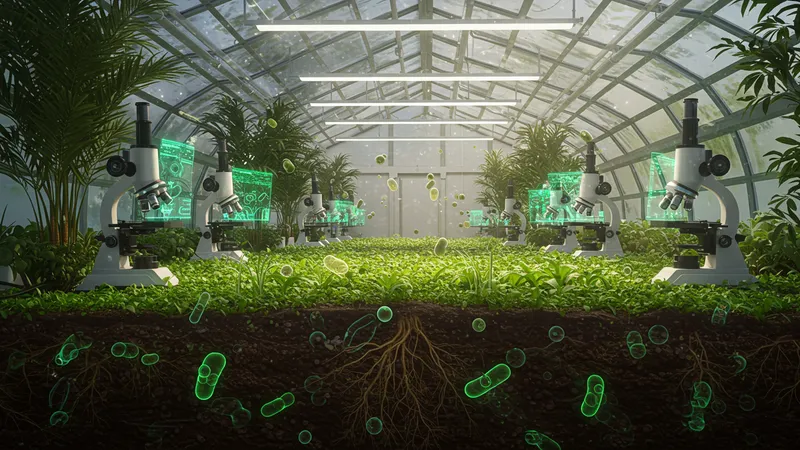
Microbes have shown they can boost plant resilience and optimize growth. A complex dance of soil microbes influences everything from nutrition uptake to pathogen defense in unheard-of precision. When microbes breathe life into growth conditions, a brand-new understanding emerges.
Monitoring these environments doesn’t come easy, requiring systems built around living fluctuations. The technological marriage with biology isn't foolproof yet, as developers focus on blending intuitive grounds with intelligent systems. Stress tipping points simultaneously challenge and promise like never before. Can we learn fast enough to manage the living webs?
This technological advancement foreshadows the application of microbiomes across agriculture—from indoor farming ventures to open-field enhancements, populations teeter on the cusp of a microbial farming sequel. Balancing revolution with evolution, the Netherlands steps into a new era of farming and findings to breathe growth into 'green.' But the microbial dance is only beginning...
Transparent trail or anonymous maze? The answer lies with blockchain as it secures over-arching control and clarity in food supply chains. In the Netherlands, pioneering efforts are gaining traction as blockchain integrates product origin and quality tracking. As a system originally built for digital encryptions, could blockchain now feed future trust?
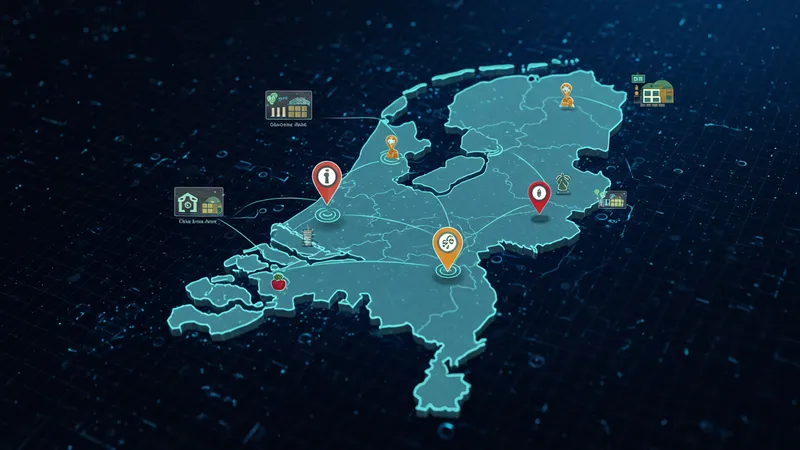
By detailing produce origin and journey, blockchain challenges food chain opacity. Ethical consumers possess the key: traceability empowers them to authenticate claims without bureaucracy. Challenges emerge—scalability and interoperability are blockchain's proverbial corners. What motivation triggers this technological unlock?
The transparent potential of blockchain offers a glimpse into unprecedented accountability. However, realizing benefits relies on collaboration and governance. The data finesse must encompass universal adoption, or risks straying into niche territory. Are we primed for aligning ethics with technology?
Entrepreneurs and techies bank on adoption proliferation, promising smart contracts that don't just track but ensure sustainable methods. Yet, transitioning farmers and stakeholders must learn the lexicon of dots and nodes voicing life cycles. This evolution from ledger to ledger, from prospect to practice—is the blockchain evolution trending?
This journey through the pioneering world of Dutch sustainable food tech and agritech closes, yet the narrative woven through these pages paints a future brimming with hope, possibility, and sustainable promise. So what have we learned? That innovation doesn’t wait. It starts, stirs, and sometimes suprises its witnesses—and in the Netherlands, it never stops. Now it’s your turn to take action. Dive deeper, share these insights, and bookmark this brave new world. The revolution is just beginning. Are you part of it?